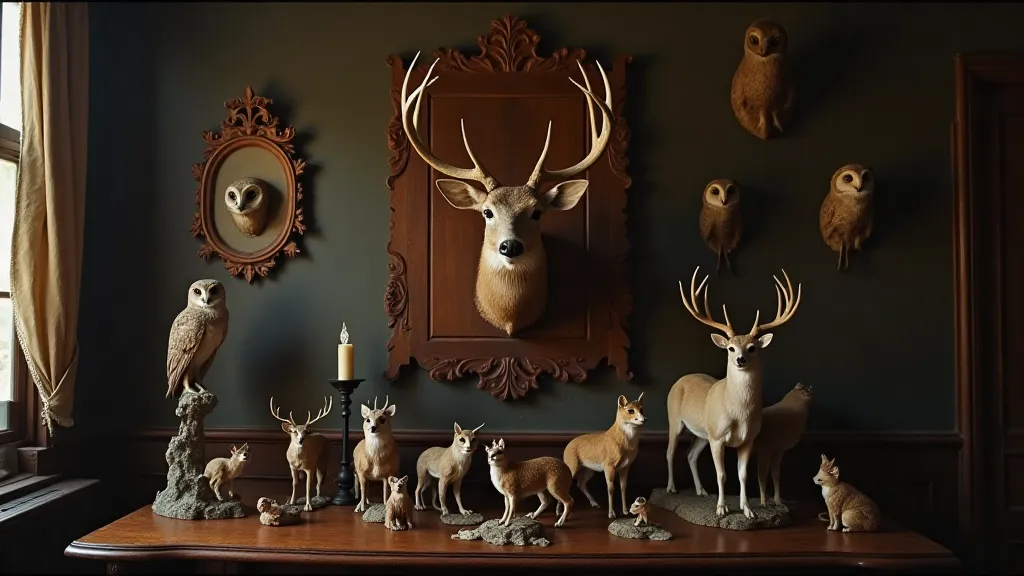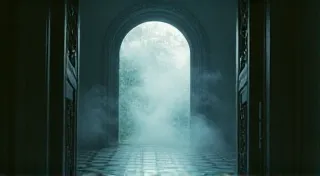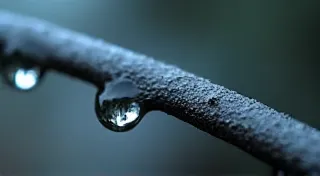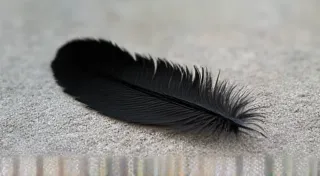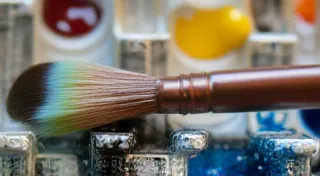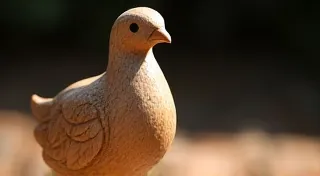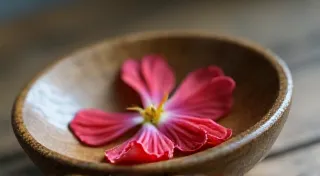The Cartographer of Stillness: Tracing Provenance Through Antique Animal Mounts
There’s a profound stillness captured within an antique animal mount. Not the stillness of death, but something quieter, more contemplative. It’s the stillness of a moment frozen in time, a creature brought back from the wild and offered a second, immobile life. For a collector, a taxidermy specimen isn’t just a beautiful object; it’s a portal to a lost era, a fragment of a forgotten narrative. But truly appreciating these pieces goes beyond admiring their aesthetic appeal – it’s about uncovering their stories, meticulously charting their provenance, becoming, in essence, a cartographer of stillness.
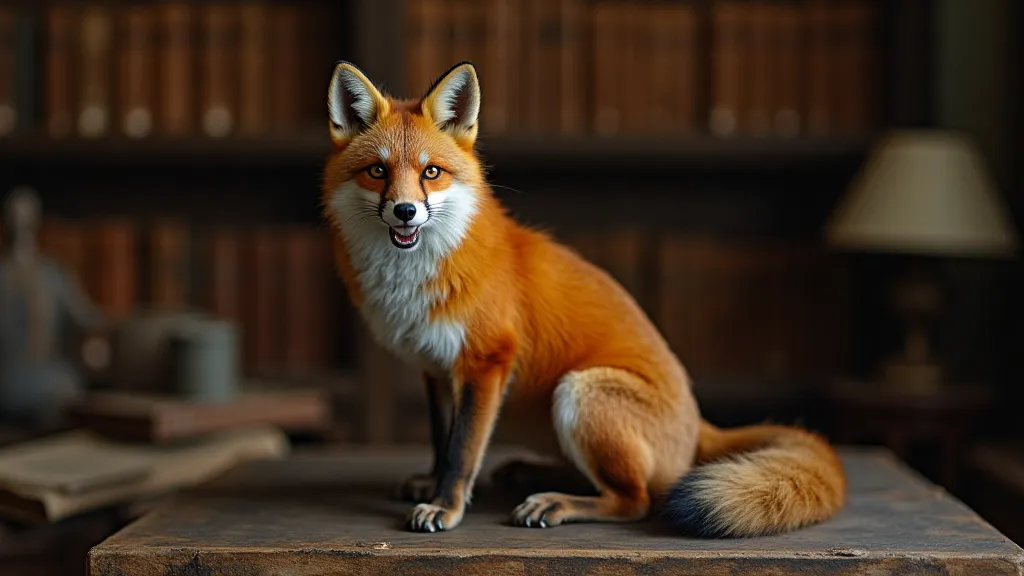
The Allure of the Past: A Brief History
Taxidermy, as a dedicated art form, has a history surprisingly intertwined with evolving scientific and cultural perspectives. Early attempts at preserving animals, dating back to ancient Egypt, were rudimentary. The more recognizable form of taxidermy emerged in the 18th century, initially driven by the burgeoning scientific community. Explorers and naturalists needed a way to document and study creatures from distant lands. Think of Audubon's meticulous bird illustrations—taxidermy served a parallel purpose, allowing scientists to study anatomical details unavailable through drawings alone.
The Victorian era, however, transformed taxidermy from a strictly scientific pursuit into a widespread popular art. The expansion of the British Empire fueled a frenzy for exotic specimens. The "Cabinet of Curiosities" evolved into the grand Victorian parlor, often adorned with meticulously posed animal mounts. These weren't just displays of wealth; they were statements of intellectual curiosity and a testament to the conquering spirit of the age. The skills of the taxidermist became highly prized, often passed down through families, and the best were sought after by wealthy landowners and gentlemen hunters. The fascination with the natural world wasn't limited to grand displays; it also sparked a deep consideration for the subject, leading some to ponder the animal’s perspective, even within the context of preservation – a deeper consideration explored in Beyond the Glass Eyes: Considering the Animal's Perspective in Antique Taxidermy.
Decoding the Clues: Identifying a Specimen
Identifying an antique animal mount is the first step in understanding its history. It’s a process of observation, deduction, and sometimes, sheer luck. Start with the obvious: the species. Even a seemingly straightforward identification can be complex. Geographic variations, subspecies, and aging all play a role. Consult field guides, museum collections, and online resources. A misidentified species can significantly impact the value and historical significance of the mount.
Next, examine the construction. Early taxidermy, particularly from the 18th and early 19th centuries, often utilized wire armatures (internal skeletons) wrapped with cloth and covered in skin. These mounts tend to have a more "rustic" appearance – the pose might be less dynamic, the facial expression a bit exaggerated. Later Victorian mounts, especially those created in the mid to late 19th century, often feature more sophisticated carvable wooden forms, allowing for greater realism and detail. Pay attention to the quality of the stitching, the type of glass eyes used (early eyes are often smaller and more primitive), and the condition of the fur or feathers.
The Hunter, the Taxidermist, the Collector: Piecing Together the Story
Uncovering the provenance of a taxidermy mount is akin to detective work. It requires patience, persistence, and a willingness to explore seemingly insignificant details. Start with the mount itself. Any markings – tags, inscriptions, or faded labels – can provide invaluable clues. Even the base of the mount can be revealing. An original, hand-carved base often bears the initials or markings of the taxidermist.
The hunting history is often the most elusive piece of the puzzle. Original hunting licenses or correspondence between the hunter and the taxidermist are rare but exist. Family histories and local archives can sometimes provide leads. If the mount was part of a larger collection, auction records and dealer inventories may offer insights. The skill and personality of the taxidermist themselves can be surprisingly revealing – a topic further examined in The Taxidermist's Signature: Finding the Imprints of Personality in Antique Mounts.
I recall a particularly fascinating example: a stoat mount I acquired several years ago. It was unremarkable in appearance, but a tiny, almost illegible inscription on the base read "J.H. – Derbyshire – 1888.” Through genealogical research and inquiries with local historical societies in Derbyshire, I was able to identify the hunter as John Hargrave, a local gamekeeper who served a prominent landed family. The discovery transformed the mount from a simple curiosity into a tangible link to the social and economic history of a rural community.
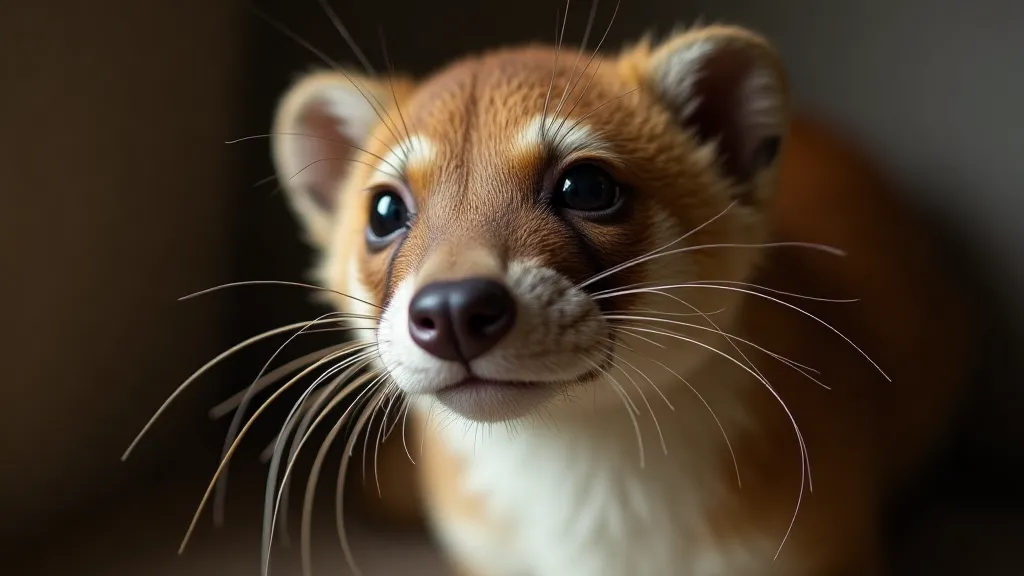
Subtle Details and Restoration Considerations
While restoration can preserve an antique taxidermy mount, it’s a delicate balance. Excessive cleaning or re-posing can erase vital clues about the mount’s history and diminish its value. Modern materials and techniques can be easily detected by experienced collectors. Ideally, restoration should be minimal and reversible, focusing on stabilizing the mount and preventing further deterioration.
The condition of the glass eyes is often a key indicator of age and originality. Early eyes are typically smaller, rounder, and possess a more primitive painted iris. Later eyes often feature a more realistic, multi-layered iris and a more elongated shape. The quality of the fur or feathers – the presence of old repairs, the consistency of the coloring – can also provide valuable insights into the mount’s history.
Beyond the Common Species: Exploring the Forgotten Forms
The focus often falls on the familiar: foxes, deer, and squirrels. However, the world of antique taxidermy is replete with less celebrated species, representing a fascinating window into the collecting habits and scientific priorities of past eras. These “forgotten forms,” as they might be called, often tell compelling stories about exploration, trade, and the ever-shifting boundaries of natural history. Collectors seeking to truly appreciate the breadth of antique taxidermy will find immense rewards in researching these less-familiar specimens, a topic explored in greater depth in The Forgotten Forms: Examining Lesser-Known Species in Antique Taxidermy Collections.
The Narrative Power of Photography and Taxidermy
Antique taxidermy is inherently photographic—a captured moment, a frozen image of a living creature. Throughout history, these mounts have served as subjects for photographers, creating evocative and sometimes surreal compositions that blur the lines between art and science, life and death. The visual interplay between the mount and its surroundings, the way light and shadow define its form, can evoke a powerful sense of memory and longing. This connection between photography and taxidermy has fostered a unique form of visual storytelling, creating lasting imprints of the past - a subject worthy of its own study. The way these images have shaped our perception of the natural world is truly remarkable and provides unique insights into how we memorialize our connection with it, captured and preserved for posterity.
The Enduring Legacy of Stillness
Collecting antique animal mounts isn’t just about acquiring beautiful objects; it’s about preserving a tangible connection to the past. It's about appreciating the skill of the taxidermist, understanding the motivations of the hunter, and recognizing the cultural context in which these remarkable pieces were created. Each mount tells a story – a story of adventure, ambition, and the enduring human fascination with the natural world. To truly appreciate an antique taxidermy specimen, one must become a cartographer of stillness, meticulously charting its provenance and celebrating the unique history it embodies.
